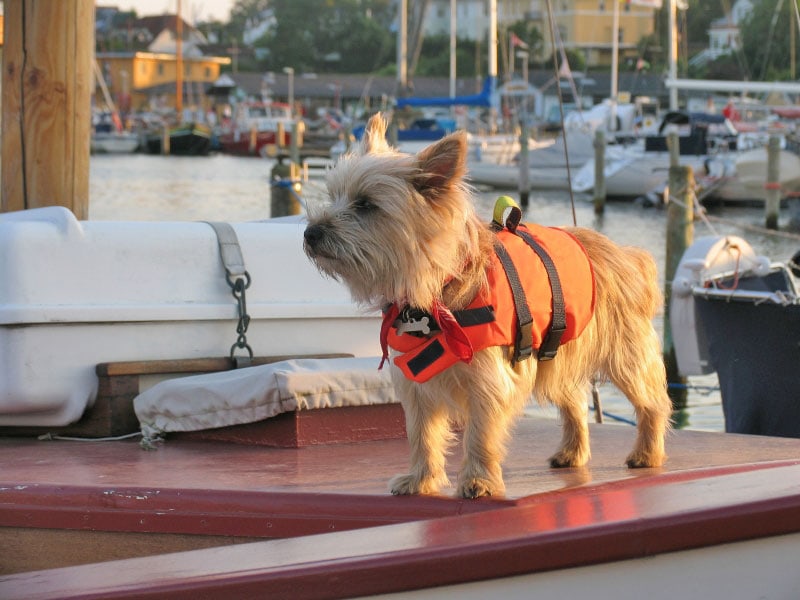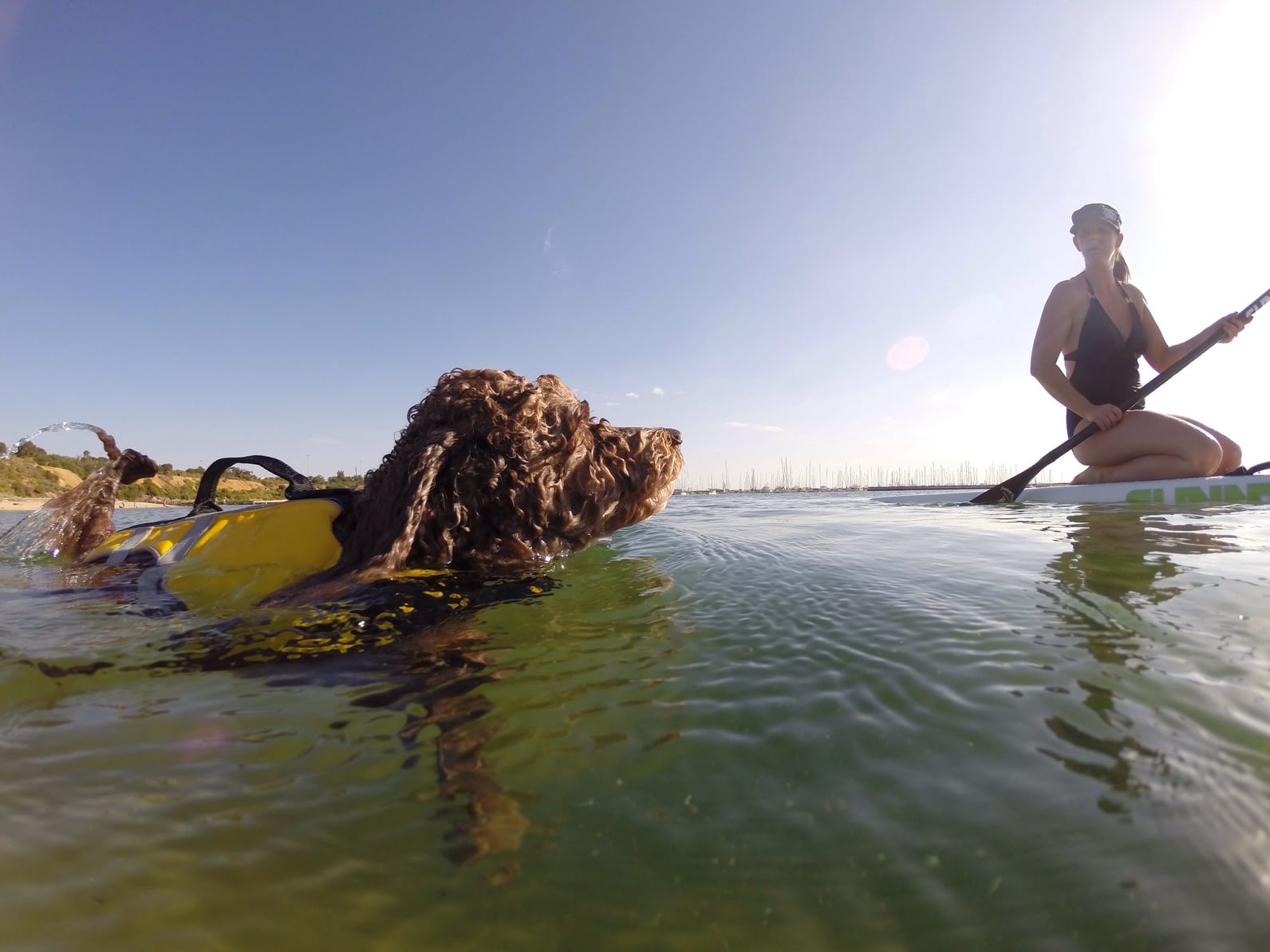7 Safety Tips For Boating With Pets
Enjoy summer on the water with your furry "best friends" with these helpful hints for boating with dogs.

While many of us can’t wait to get out on the lake or ocean this summer, according to the U.S. Coast Guard, practicing boating safety for the pets we like to take with us is a serious issue. Pets are no different than small children in their need for extra measures to ensure they are safe and secure on the water, as they may become seasick, dehydrated, suffer heatstroke, become lost, and even drown. Whether Fifi and Rex find themselves cavorting on a Chris-Craft, or bouncing on a Bowrider, taking precautions to ensure they enjoy the outing, learn to love and master the activity, and are safe under all conditions can make for a joyful journey for all.
7 Pet Boating Safety Tips
Know your dog! First, experts remind us that not all dogs automatically take to the water. Even proverbial water-loving breeds — Chesapeake Bay Retrievers, Newfoundlands, Irish and English Setters, and Golden Retrievers, for example — may prefer splashing and paddling to full blown swimming in deep water. Other breeds are not comfortable at all in or around water, so introducing dogs to the idea involves taking enough time to let them adjust.
Get them used to lifejackets. According to veterinarians, one way to start is to let them get used to wearing a lifejacket. Just because a dog is a good swimmer doesn’t mean he can’t get tired, hypothermic or disoriented in the water. Additionally, if your dog falls overboard, you’ll need something to grab onto to pull him to safety. For the first few days, put the lifejacket on at home for a few minutes at a time, working up to an hour or more.
Short trips. Taking your dog out for a short trip is recommended for a time or two as you observe her behavior and comfort level. If she is seasick, turn back immediately and check with your vet before attempting another trip (often this can be controlled with over-the-counter medications administered ahead of time). If seasickness persists despite all efforts, you won’t want to force your dog to continue to experience it.
Resort to treats. If she’s fearful, animal behaviorists say offering snacks throughout the trip is a good method of having your dog associate boating with treats. In time, when she is comfortable, you can ease off on the treats.
Watch for dehydration. Dehydration is as much a problem for animals as it is for humans in the summer sun — and certainly out on the water. Don’t forget to make absolutely sure your pet drinks, and stop often enough to allow him to relieve himself. If going on a long trip, pet-friendly products such as the Pup Head Portable Indoor Potty, which simulates grass, are a good investment.
Be sun savvy. It’s a known fact that dogs can get sunburn, especially lighter breeds with pink noses. A sunscreen with at least an SPF 15 is recommended for exposed areas such as nose, interior of ears (take care not to apply it into the ear canal), and belly, and check with your vet about which brands are safest as dogs will tend to lick it off. Bear in mind excessive sun exposure can cause severe illness in dogs, just as it can for humans. Be sure to provide a shaded area to which they can retreat on the boat. Manufacturers remind us that modern boat surfaces, such as fiberglass, can heat up dangerously in the sun. Dogs absorb heat through the pads of their feet and need to release it through their pads and abdomen, so take extreme precautions to keep them cool (cool, wet towels on which to rest may help if your pet will use them).
Be prepared! Finally, be sure to take your dog’s medications if you’ll be gone all day and veterinary records if stopping somewhere overnight.
Above all, planning and common sense will provide for a safe, fun boating experience for humans and canine alike!
Beth Herman
Beth Herman is a freelance writer with interests in healthy living and food, family, animal welfare, architecture and design, religion, and yoga. She writes for a variety of national and regional publications, institutions, and websites.






